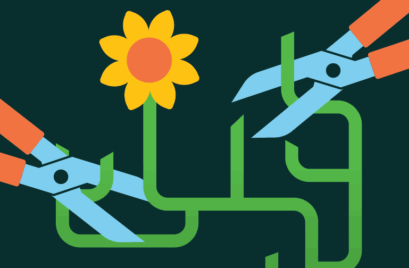
You’re having a motivation slump at work. It could be as simple and as temporary as Mondayitis or Hump Day, or as profound as considering resigning. Either way, you’re experiencing a loss of energy, focus, and desire to do your job.
For those of us who ultimately want to climb out of it, there are lifelines to be grasped and to throw for others. But firstly, it helps to understand a little of the forces that create human agency and get us up and at ‘em.
So, how does our motivation hardwiring work?
Currently, there are a slew of psychological theories on this topic that can be broadly divided into content and process. Content theories focus on “what” motivates us and process theories lean into “how” motivation occurs.
However, one of the motivation theories with the most empirical evidence to support it is Self Determination Theory (SDT).
Why Does Knowing About Theory Help?
When psychological theories intersect with organisational theories, we get information that can be applied to influence change. For example, Self Determination theory is about intrinsic motivation and takes the position that human motivation relies on three “innate “psychological needs:

Ryan, R. M., & Deci, E. L. (2000). Self-determination theory and the facilitation of intrinsic motivation, social development, and well-being. American Psychologist, 55(1), 68–78
If we then map those SDT needs to an implementation framework, it can track what the needs are and how we can activate our motivation levels. This kind of graphical representation ensures we have tangible touchpoints to apply to ourselves and our teams.

Keeping these touchpoints in mind, let’s now look at how some examples of how leaders have dealt with significant motivational challenges, through an SDT lens.
Motivating Self: A Case Study
In her book The Gifts of Imperfection, Brené Brown talks about a period when she struggled with her work and her personal life. She felt disconnected from her purpose and found it difficult to engage with her work, even though she had been passionate about it in the past. During this time, she questioned her worth and ability to contribute, which led to a sense of disillusionment and loss of motivation.
Regaining that motivation came through a process of embracing her own imperfections and allowing herself to make mistakes without harsh self-judgment. By practicing self-compassion and reframing how she saw her challenges, she changed her mindset, restoring her sense of autonomy and personal power.
Acknowledging that her work was valuable (even if it didn’t feel that way), also helped her feel more engaged. She returned to her research and writing with the understanding that it wasn’t about achieving perfection but about making progress and showing up authentically. Part of being able to do this was talking about her struggles with friends, colleagues, and her community. Those relationships helped her feel understood and supported and re-instilled her sense of belonging.
Brown’s experience highlights how vulnerability, support systems, and reframing agency are pivotal in overcoming motivational slumps, especially when life feels overwhelming.
Motivating Others: A Case Study
Eileen Fisher started her clothing company in the 1980s because she wanted to create clothes that felt comfortable, timeless, and honest. What began as a personal design instinct soon evolved into something much bigger: a story of how business could be done differently and in a way that kept her team highly motivated.
Firstly, Fisher invited everyone into the creative process. Team meetings were open conversations, where she encouraged her employees to explore new ideas, take risks, and learn from their mistakes. This sense of freedom in their roles gave them the autonomy to innovate, make decisions, and feel ownership over the brand’s direction. This was further bolstered by opening investment in the organisation to her team. Eileen Fisher is now 40% employee owned.
Fisher also fostered a deep sense of connection by framing the work as a collective journey, not just a personal business venture, staying transparent about challenges and uncertainties. When something didn’t work, she acknowledged it without placing blame. This created an environment where team members felt valued and connected, knowing they were trusted to contribute to the company’s evolution.
In addition, she made it clear that each person in the company was a vital part of the bigger picture. They weren’t just making garments; they were contributing to a new model of business where values weren’t just written on paper but lived out every day.
Fisher bolstered this approach by regularly highlighting individual achievements, whether it was a designer’s innovation with fabric waste or a customer service rep’s contribution to inclusivity. By acknowledging these successes, she reinforced their competence and the impact their work was having on the company’s success.
Tips for Self-Motivation
So, based on our understanding of human agency, there are some very real and practical ways to set a spark to your wet fuse. Some of these tips might work for you!
Cultivating Autonomy:
Take ownership over your choices
Make decisions based on your values and what truly matters to you, rather than external pressures. When you feel that you’re in charge of your actions, motivation naturally increases.
Set your own goals
Create goals that resonate with your personal interests or long-term vision. Break them down into smaller, manageable steps to maintain a sense of control over your progress.
Experiment with flexibility
If you’re stuck in a routine that feels limiting, try switching things up. Allowing for variety in your tasks or methods can make them feel more engaging.
Enhancing a Sense of Competence:
Challenge yourself at the right level
Choose tasks that stretch your skills but aren’t too overwhelming. Achieving small successes along the way will enhance your sense of competence and fuel further motivation.
Celebrate progress
Acknowledge even the smallest accomplishments. Recognising your growth builds confidence in your abilities and reinforces the belief that you’re capable of handling challenges.
Seek feedback
Constructive feedback helps you learn, improve, and understand where you can do better. Knowing that you’re growing in your skillset can strengthen your motivation to continue working.
Nurturing Relatedness:
Share your goals
Talking about your aspirations with others makes them feel more real and creates a sense of accountability. It also opens up the opportunity for advice, encouragement, and camaraderie.
Collaborate on projects
Working with others can make tasks more enjoyable and fulfilling. When you feel connected to a group working towards a common goal, it’s easier to stay motivated and committed.
Incorporating the principles of Self-Determination Theory into your daily life can transform the way you approach motivation. By cultivating a sense of autonomy, enhancing your competence, and nurturing relatedness/connection, you can build a deeper, more intrinsic drive to pursue your goals.
These strategies not only help you stay focused but also cultivate a sense of purpose and connection that fuels long-term motivation. Ultimately, when you align your actions with your values and create an environment that supports growth and collaboration, you’ll find that motivation becomes not just a fleeting feeling, but a sustainable force that propels you forward.







